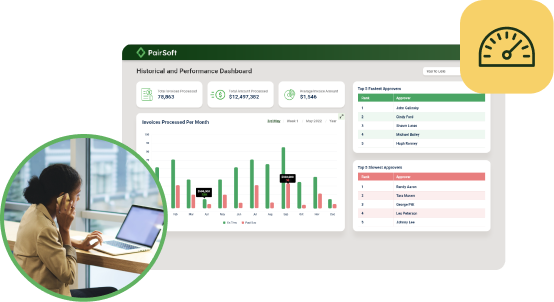Whether you call it maverick spend, rogue spend, tail spend, or unmanaged spend, we’re talking about corporate spending that occurs outside of your defined procurement cycle. And it can be both widespread and costly. Estimates of how much business spend is unmanaged vary from just a few percents to as
high as 50 percent. The problem is a real concern to procurement professionals —
research by ProcureCon West found that procurement professionals consider unmanaged spending the biggest indirect spend management challenge
.Targeting areas of unmanaged spending is a key way procurement professionals can deliver value and maximize savings for their organizations. According to data compiled by
The Hackett Group, better managing tail spend can lead to 7.1 percent savings on average. Here we outline our top five ways to reduce unmanaged spend in your organization.
1. Make it easy to buy from your preferred suppliers
When you can direct the majority of routine, recurring purchases to your preferred suppliers, you maximize your buying power and negotiated pricing. Make it easy for shopper to buy from preferred suppliers by setting up guided buying catalogs. These catalogs can be organized by vendor, by department, by functional area, or other meaningful grouping and include predefined vendor items, pricing, and accounting information. The catalogs provide a simple and intuitive interface option for users to select items with a few clicks and automatically submit them for approval simply by checking out of their shopping cart.
2. Make the requisition process friendly, efficient, and mobile
We know that when a business process is cumbersome and complex, people will naturally look for ways to avoid it. So, work to make your internal requisition process friendly and efficient so employees are encouraged to use it. In addition to making it easy, make it mobile so employees can submit requisitions and monitor their status from their smart phones and tablets.
3. Classify it and account for it
Taking the time to review and categorize your organization’s unmanaged spend is a good first step in reducing it. Is it occurring primarily in one category – office supplies for example? Is a substantial portion associated with one or two vendors? Once you understand where your unmanaged spend is going, you can work to bring it under management. For example, you might work to negotiate contracts with some of the vendors associated with the unmanaged spend, or add new items to your guided buying catalogs.
4. Centralize purchasing
Centralized purchasing is one of the single most important ways to reduce unmanaged spending. When purchasing is decentralized, it’s difficult to grasp the scale of this type of spending. And, if you can’t accurately assess what is being spent, on what and by whom, how can you manage it effectively? Centralized spending increases your company’s purchasing power and helps achieve economies of scale. It also makes it easier to provide careful scrutiny of suppliers and their contracts.
5. Effectively track and monitor supplier contracts
Vendor contracts are an excellent way to bring more corporate spending under management. Contracts allow you to track committed amounts and quantities against contract budgets, restrict purchases to a defined list of items, enforce pricing and terms agreements, and limit overall spending to a particular supplier. In the same ProcureCon West survey, vendor management was highlighted as a major challenge by 15% of respondents. Effective contract tracking and monitoring can ease that challenge by spelling out the commitments and expectations of both parties.
Procurement management software is a powerful tool to help organizations bring more spend under management, thereby increasing visibility into corporate spending, increasing efficiencies, and reducing overall costs.






